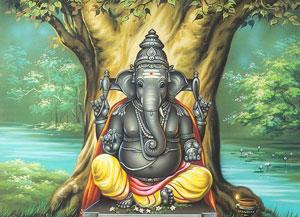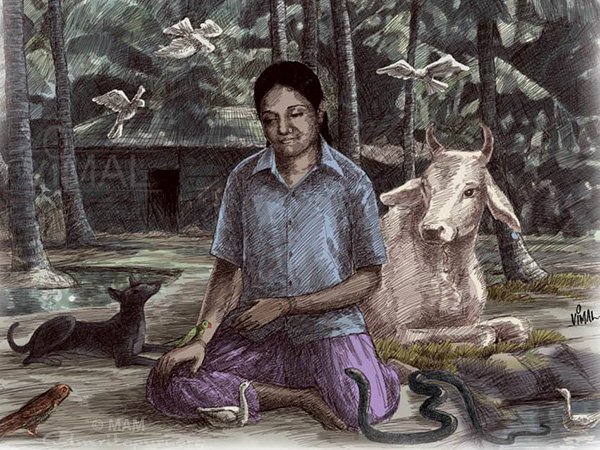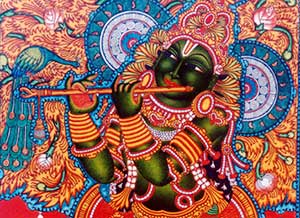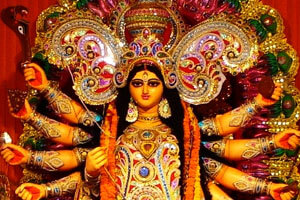Month: August 2000
-
Om Lokah Samastah Sukhino Bhavantu
Om Lokah Samastah Sukhino Bhavantu: May Peace & Happiness Prevail Amma has chosen some peace mantras for daily chanting by her devotees and disciples. One of those invocations is Om lokah samastah sukhino bhavantu. Although this mantra does not appear in any of the existent Veda sakhas [Vedic branches], it is an expression of the…
-
Asatoma Sadgamaya: Meaning and commentary
asato ma sadgamaya tamaso ma jyotirgamaya mrtyorma amrtam gamaya om shanti shanti shanti. ॐ असतो मा सद्गमय । तमसो मा ज्योतिर्गमय । मृत्योर्मा अमृतं गमय । ॐ शान्तिः शान्तिः शान्तिः ॥ Lead me from the asat to the sat. Lead me from darkness to light. Lead me from death to immortality Om Peace Peace Peace.…
-
Why do we chant 3 Shanti at the end? Meaning of Om Shanti Shanti Shanti
The mantras chanted in Amma’s ashrams at the end of arati and archana are called shanti mantras. Therefore to conclude each one, “shanti,” which means “peace,” is chanted three times. As a spiritual aspirant, one chants shanti in desire for the occurrence of circumstances conducive to a spiritual education. But these mantras can be chanted…
-

Lord Ganesha: his birth story, symbolism meaning and practice
If we don’t honour the Ganas, then our every action is a form of thievery, as it is unsanctioned. Therefore, instead of propitiating each Gana in order to receive their blessings, we bow to their Lord, Sri Ganesha.
-
Arati of Amma: lyricks, meaning and commentary
Ārati symbolizes surrender—the final relinquishment of the ego to God. Just as the camphor used in the ritual dissolves into nothingness, so too should the individual will merge in the divine will, so too should we make an offering of the only thing that is truly ours to give—the ego. Only when we give up…
-

Sri Krishna, Amma & the cow
Symbolism of the cow Due to the wise example and guidance of India’s ancient Rishis (Seers), who established the habit of honouring all aspects of life, cows, through their symbiotic relationship with people, were naturally given a high place in Indian culture. This high status was reinforced and high-lighted with the advent of Sri Krishna…
-
Meenakshi & Kannagi of Madurai
Meenakshi & Kannagi: Madurai’s Women of Power & Grace Sthala Puranas of Bharat According to the legend, on the day the Madurai was to be named, Lord Shiva blessed the land and its people while divine nectar showered from his dreadlocked hair. The city hence came to be known as “Madhurapuri”—the City of Divine Nectar.…
-

The life of Sri Krishna
In 3228 BCE in Mathura, India, a child was born who was destined to reshape the spiritual and temporal destiny of mankind—Sri Krishna. In his 125 years of life, Sri Krishna made an indelible impression upon mankind’s collective consciousness—re-educating the world about devotion and dharma as well as the ultimate reality. His life was a…
-

Navaratri Celebrations, 9 nights of Devi
Among the popular festivals celebrated in India, Navaratri is among the longest. Like the other festivals of India, Navaratri is rich in meaning. At one level, Navaratri signifies the progress of a spiritual aspirant. During this spiritual journey, the aspirant has to pass three stages personified by Durga, Lakshmi and Saraswati. Then, he or she…
-

Gita Jayanti and the Bhagavad Gita
Gita Jayanti marks the anniversary of the day Lord Krishna gave his immortal message to Arjuna on the battlefield of Kurukshetra. The Bhagavad Gita is an exquisite discourse given to Arjuna by Lord Krishna, at the moment when Arjuna faced the most difficult situation of his life. Arjuna was a warrior of high repute; he…
